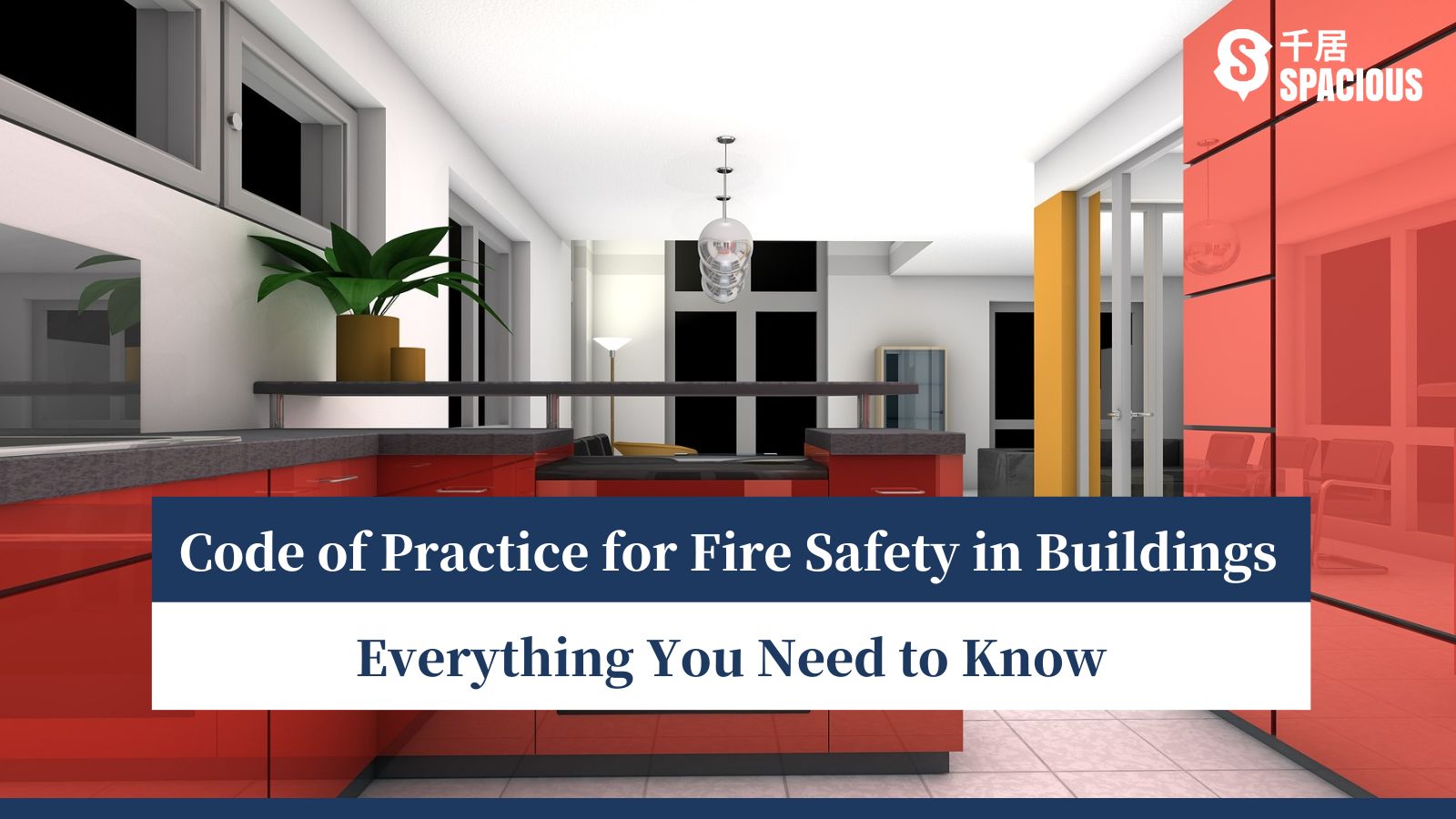
In recent years, open kitchens have become increasingly common in new developments. Are there any requirements of fire prevention for owners? What should be noted when renovating an open kitchen?
To help you avoid legal pitfalls, Spacious has compiled some key points from the Code of Practice for Fire Safety in Buildings, as well as precautions for renovating an open kitchen . Read on to learn more.
Jump to: Common Violations | Points to Note for Open Kitchens | FAQ
Common Violations of the Code of Practice
The Buildings Department has issued the Code of Practice for Fire Safety in Buildings 2011 to protect the safety of owners and tenants against fire. The Code of Practice stipulate requirements for fire-resistant structures, escape routes, rescue paths and more. Any building works must be carried out according to the Code and obtain approval from the Buildings Department. So what limitations do the Code of Practice impose on owners and tenants?
Most cases of violation happen at the time of renovation. Several fire-resistant structures are prohibited from being dismantled. Taking down those parts during renovation may violate the law.
Both owners and tenants are subject to the Code, and they should pay special attention to any structural changes of the unit. It’s wise to consult with professionals beforehand. One of the most common violations is the reconstruction of the kitchen.
Violation 1: Failure to Obtain Approval for Open Kitchen Conversion
Hong Kong is known for its cramped living environment. Many homeowners convert their kitchens to open-plan for more space. However, the Buildings Department has certain requirements for an open-plan kitchen.
If a homeowner wishes to convert an enclosed kitchen into an open-plan one, he must hire a professional approved by the Buildings Department to submit the building plans for approval. Otherwise, they may be in violation of the Code.
With a lack of partition walls, fires in open kitchens can spread faster than in enclosed ones. The fire safety regulation stipulates that if a unit has only one door and the open-plan kitchen is located near that door, relevant fire safety equipment must be installed to ensure residents’ safety.
However, if a unit has more than one entrance, which is commonly seen in a village house or villa, it may be exempt from the fire safety regulation.
According to the Code of Practice for Fire Safety in Buildings 2011, an open-plan kitchen must have the following fire safety equipment:
- Smoke detectors
- Automatic sprinkler system
- Fire-resistant walls
Smoke Detectors
The Code stipulates that smoke detectors must be installed not only inside residential units, but also in the public corridors outside the residence. The detectors inside should be connected to the building’s fire control panel, while those outside should be to the alarm system, which will be directly linked to the Fire Services Communications Centre in case of emergencies.
Since the public corridors of a building are considered public areas, owners may need to obtain approval from the building’s management company or the owners’ corporation before installation. They may also need to check with the Deed of Mutual Covenant to ensure compliance with all relevant regulations.
Automatic Sprinkler System
According to the Code, an automatic sprinkler system must be installed on the ceiling of an open kitchen and connected to the building’s alarm system.
However, as some buildings are designed with enclosed kitchens, they may not have a fire sprinkler tank and automatic sprinkler system installed. Even if the owner installs a fire sprinkler head in the unit, it cannot be supplied with water, which does not comply with the regulations.
If the owner wants to install a fire tank in the building, he must consult with the management company or the Owners’ Corporation, and the procedures are complicated. The owner also needs to bear the cost of construction, maintenance, and repair.
Fire-resistant Wall
The Code stipulates that a fire-resistant wall with a width of not less than 600 millimeters must be installed in full height between the unit’s entrance and the open kitchen. The wall must have a fire resistance of at least half an hour and be constructed of materials that are difficult to remove, such as reinforced concrete. In addition, it cannot be removed during future renovations or rentals; otherwise, it will be considered a violation.
Violation 2: Neglecting Regular Inspection of Open kitchens
In recent years, many new properties have incorporated open kitchens into their designs. While these buildings are equipped with relevant fire safety devices, it does not mean that buyers or owners can ignore them after purchase.
According to the Fire Services (Installations and Equipment) Regulations, all fire safety devices, including smoke detectors and automatic sprinkler systems, must undergo annual inspections by registered contractors, with the costs of inspection, maintenance, and repair borne by the owner.
If the owner fails to inspect these fire safety devices on time, they may face fines of up to HK$50,000 upon conviction. Although open kitchens can be aesthetically pleasing, owners must consider the relevant responsibilities.
Find or sell properties on Spacious
Points to Note for Renting or Buying Units with Open Kitchens
If purchasing a second-hand unit with an open kitchen, the buyer should inquire with the owner to ensure that there were no unauthorized modifications made. If the unit was modified without following the necessary procedures, the buyer would bear legal responsibilities and be liable for the cost of restoring the kitchen.
Similarly, before renting a property, the tenant should ask the owner about the fire safety measures in the open kitchen.
According to government data and recommendations from the Consumer Council, buyers or tenants should request the following documents from the owner to confirm that the kitchen modifications comply with the fire safety regulations:
- Approved building plans from the Buildings Department
- Approval letter for the modification plans issued by the Buildings Department and Reply to the Certificate on Completion of Building Works
- Certificate issued by a registered fire equipment contractor
Unauthorized modifications to the kitchen can pose a threat to personal safety and even affect insurance compensation. Buyers should pay attention to it when viewing property.
If you are searching for a property across different neighbourhoods, go to Spacious to discover a wealth of properties listed for sale.
Find or sell properties on Spacious
FAQ
Is approval needed for open plan kitchen conversion if open flame is not used at home?
If the unit originally had an enclosed kitchen – whether the renovation involves using an open flame or not, the renovation work requires approval from the Buildings Department under the Code of Practice for Fire Safety in Buildings 2011.
The homeowner should hire a qualified professional approved by the Buildings Department to submit the building plans for approval. Also, he should first check the building’s Mutual Deeds of Covenant to see if the building allows for such renovation work.
Is it forbidden to use open flame in an open kitchen?
As long as the kitchen meets the requirements specified in the Code of Practice for Fire Safety in Buildings 2011 and is equipped with qualified devices, it is allowed to use an open flame cooking stove.
However, some buildings are subject to building regulations that require residents to use non-flame cooking. Homeowners should check the regulations before starting renovation work.









